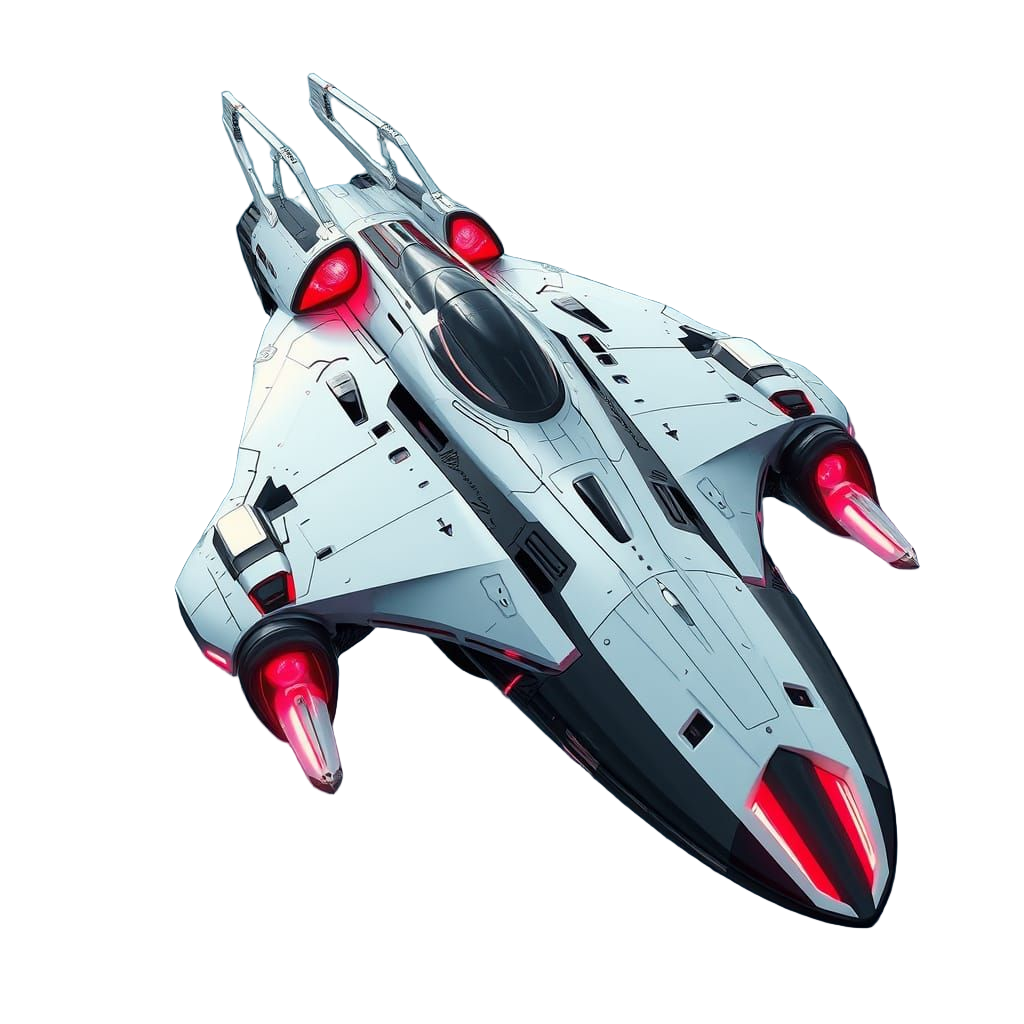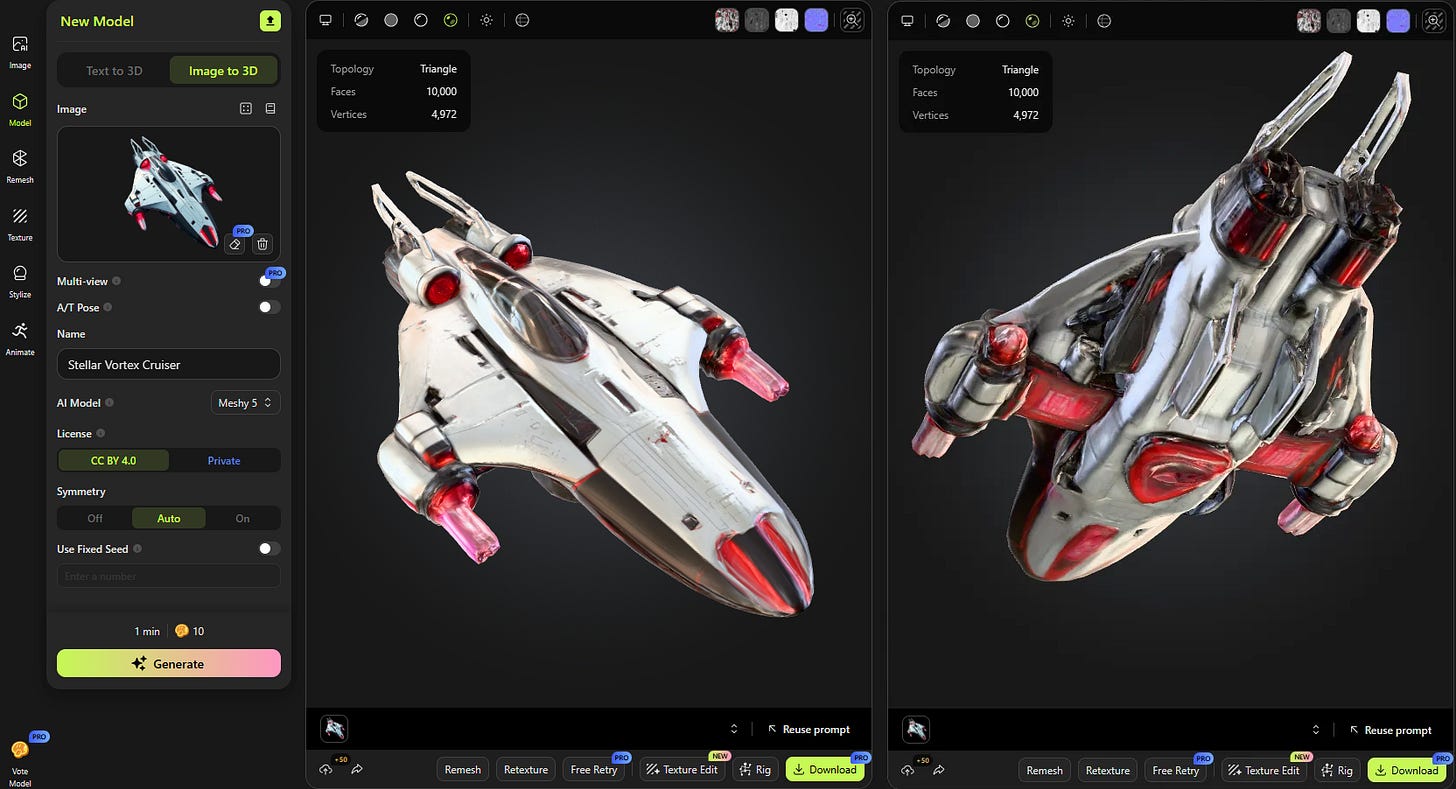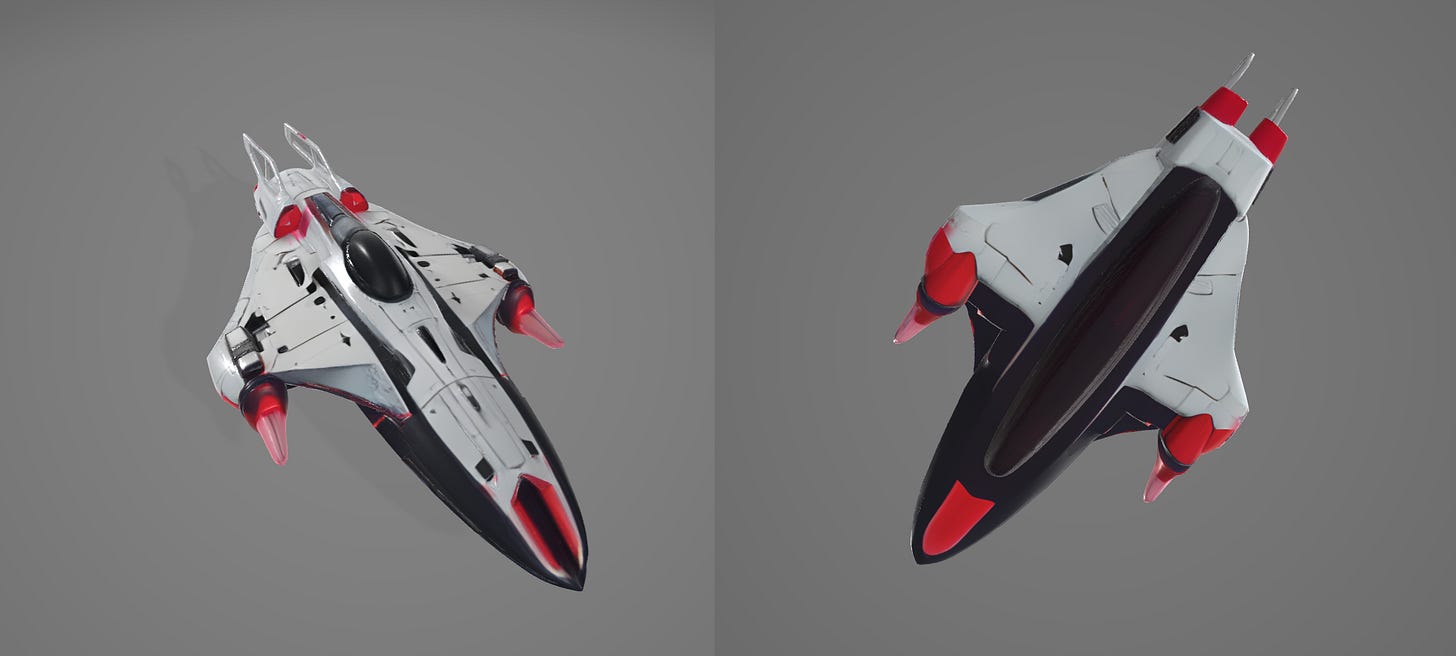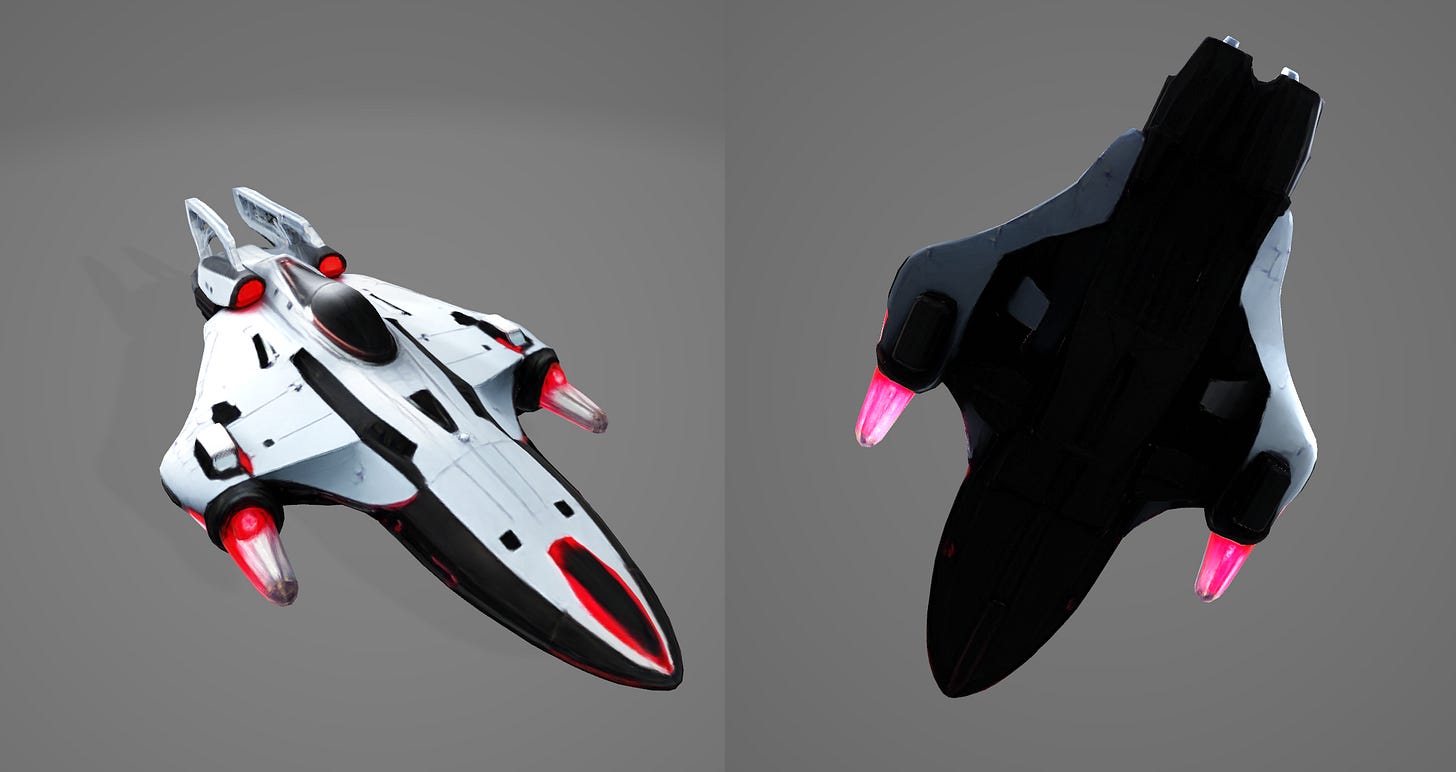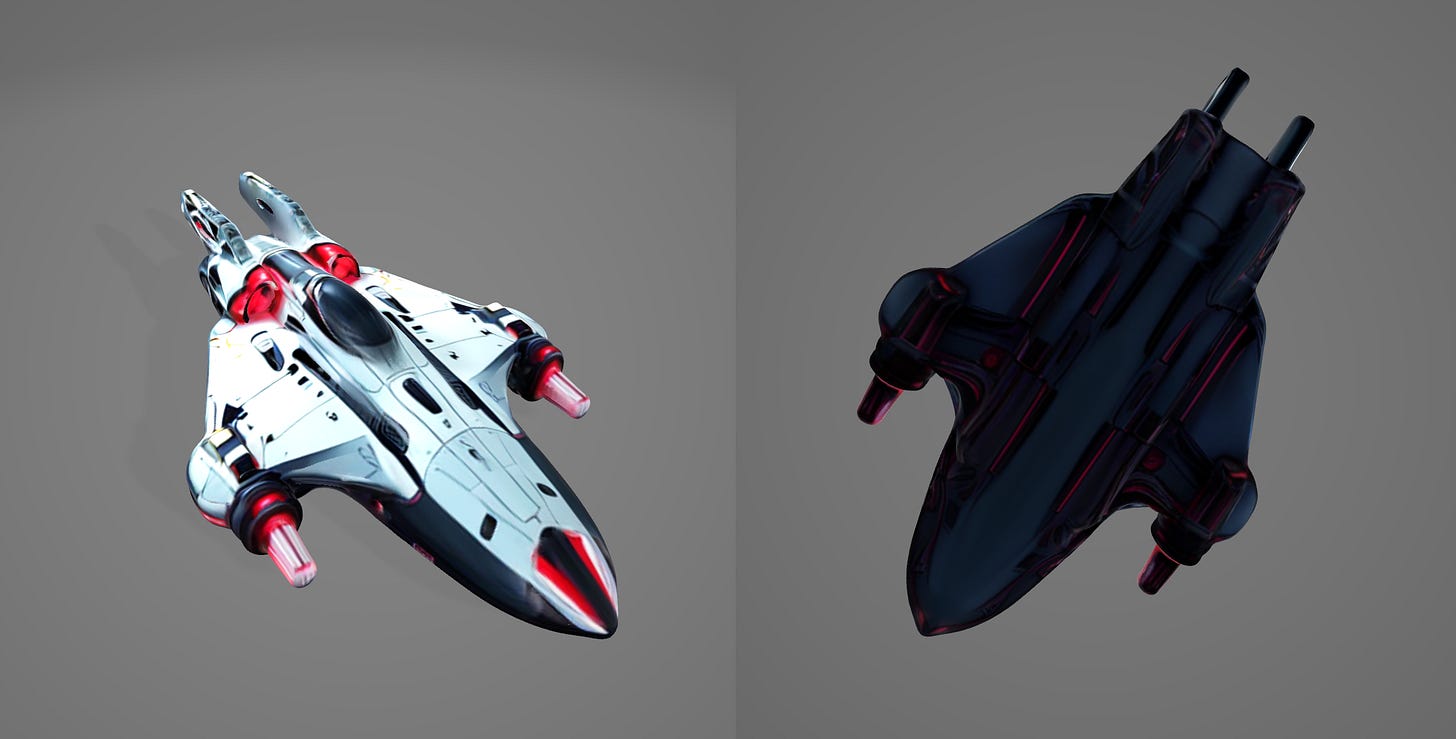Exploring the Potential of AI-Powered 2D-to-3D Generators:
Or, Are 2D-to-3D Generators Ready for Practical Use?
The rise of AI-powered 3D generators has sparked curiosity among creators: can these tools actually streamline the process of turning 2D concepts into usable 3D models? To find out, I tested 4 AI-based 2D-to-3D conversion tools, evaluating their accuracy, ease of use, and overall practicality for real-world projects. The goal was simple: determine whether these generators are truly helpful in 3D content creation and, if so, to what extent.
Testing the Process: From 2D Sketch to 3D Model
For this experiment, I started with an AI-generated image of a small ship. This design could serve as a concept sketch for a toy or a game asset. To simplify the 3D conversion process, I removed the background beforehand, a step that can now be automated with modern tools. So far, the entire preparation took just a few minutes. Below is the original image used for the test:
Predicting the Challenges: Where AI Might Struggle
Before diving into the actual 3D generation, let’s consider where these AI tools might succeed and where they’ll likely fail. Based on the ship’s design, I expect the generators will handle the main body decently but struggle with the thin, intricate structures at the back. Even the 2D AI had trouble rendering them accurately. Another point of interest is how they’ll interpret the emissive elements on the front, rear, and wings, as those areas that require both geometric and material understanding, which generative AI doesn’t have.
Most crucially, I’m leaving the bottom of the ship completely undefined. This is intentional to make a somehow realistic use case: if a generator requires multiple views to produce a usable model, then the practicality of these tools go away. After all, if you’re already creating reference images from multiple angles, you might as well model it manually, or use photogrammetry, if you have a real model.
Actually: Why Not Just Use Photogrammetry?
Before proceeding, it’s worth addressing an obvious alternative: Why not use photogrammetry or multi-image reconstruction tools? While these methods (some of which use AI for refinement) excel at recreating real-world objects from photos, they’re not generative AI. If you provide enough reference images, they can produce highly accurate 3D models, which is a different workflow altogether. Since this test focuses on single-image generative AI, we’ll leave photogrammetry out of the discussion for now.
First Impressions: Navigating the Sea of (Misleading) Options
Now, onto the actual 3D generation. The first problem I notice is just finding a tool that actually does the job. A quick search floods you with options, but many promise "3D generation" while only delivering 2D images with a 3D effect. Even among genuine tools, some bury the feature behind paywalls, even when they say they don’t. And forget about doing any test without signing up.
Ok, let’s see how the viable contenders perform.
Tool #1: Meshy AI: Fast Results, Mixed Quality
Having used Meshy AI before, I knew the process would be straightforward: upload the image, click “generate”, and in about a minute, I’d have four 3D model variations to choose from. As expected, the AI had to hallucinate the entire bottom of the ship because it had no visual reference for. After picking the best base model, I proceeded with texture generation. The image below shows the results:
Result are at best promising, but far from perfect
Model Usability: Okay, but not great. The overall shape captures the ship’s silhouette, making it theoretically usable, but only after significant cleanup.
Texture Quality: This is bad. While the colors and broad strokes are recognizable, the details are blurry and inconsistent. For any serious project, we’d need to retexture this from scratch.
The Bottom View: Here’s where things fall apart. The AI’s guess at the ship’s underside is a mess of asymmetrical geometry and overlapping faces. It almost feels as the AI tried to imagine too much. This isn’t just a texture issue, I believe that the mesh itself requires manual retopology.
Meshy AI may be a decent starting point for rapid prototyping, but the output demands substantial manual fixes, especially for parts the AI had to invent.
Tool #2: Hyper3D: Simplified but More Stable
Like Meshy AI, Hyper3D follows a familiar workflow: upload the image, hit “generate”, and wait as it produces a mesh. After that, click again to generate a texture. The process is just as fast, but the results look like take a different approach.
Cleaner geometry, but questionable materials:
Mesh Quality: The model is noticeably simplified, which actually works in its favor, showing fewer jagged edges or overlapping faces compared to Meshy’s output. There’s also an apparent symmetry to the geometry, making it a better foundation for edits.
Texture Issues: While the mapping is cleaner, the material feels unnaturally shiny, almost plasticky. This could be due to default PBR settings or over-optimized reflections. Either way, it’s another case where manual retexturing would be necessary for a polished result.
Hyper3D trades some detail for stability, producing a more workable base mesh but the overly glossy textures and simplified forms mean it’s still not a one-click solution.
Tool #3: 3Dify: Functional but Flawed Geometry
Following the same upload-and-generate workflow as the others, 3Dify produces both mesh and texture in one single pass with mixed results.
A welcomed contrast with several caveats:
Mesh Quality: The wireframe reveals relatively simple topology, but struggles with rounded surfaces (especially at the rear and the wings). While not as distorted as Meshy’s output, it’s less optimized than Hyper3D’s seemingly intentional simplified approach.
Texture Workflow: The matte, non-reflective texture is a welcome contrast to previous overshined looks. However, details are still blurry, and likely unusable without manual touch-ups.
3Dify lands in a middle ground, I think it has better textures than the previous tools, but worse mesh readiness than Hyper3D’s clean base. If given the choice, I believe that Hyper3D’s simpler geometry would save more time in the long run: fewer fixes needed before improvements can even begin.
Tool #4: The3DAI: Good, But Still Imperfect, Foundation
The final contender in today’s tests, The3DAI, follows the same streamlined process: upload, generate, and wait. Results are very similar to the previous generators.
The result has the common highs and lows:
Mesh Quality: Unlike the other tools, The3DAI generates a clean, logical underside, which is relatively simple but well-proportioned. However, we don’t know if this will happen always. On the other hand, the wireframe reveals unnecessarily complex geometry, which could complicate manual edits.
Texture Issues: like many of the others, the materials are too reflective, giving a shiny appearance. Also, the texture is filled with blurry details: some areas lack sharpness, meaning retexturing would still be necessary for professional use.
The3DAI shows promised creating hidden surfaces, but falls short in mesh optimization and texture fidelity. Like the others, it requires manual cleanup to be truly usable.
Final Analysis: The Reality of AI 3D Generators
1. The Fine-Tuning Paradox
While this test isn’t exhaustive, I believe it covers a representative sample of current AI 3D tools as they are all very similar. One could argue that more fine-tuning might improve results, but at what point does tweaking prompts and parameters become as labor-intensive as traditional 3D modeling? When YouTube tutorials and free software like Blender exist, spending hours wrestling with AI outputs defeats the purpose. And let’s not forget that after the generation of the models, there will be still work to do.
And remember, these tools market themselves as replacements for professional artists, but as far as I can see, they fundamentally fail to deliver on that promise.
2. Are These Tools the Future of 3D?
No, they aren’t.
The quality is still far from professional standards. The possibility of time savings is dubious at best: if you must modify the output using traditional tools, the efficiency gain vanishes. They might work as plugins for Blender, 3DS Max or Maya to generate rough drafts, but textures will likely need full overhauls.
3. "Something Is Better Than Nothing", right?
True, these tools beat having no 3D model at all. But they’re sold as solutions to problems currently handled by professionals, a claim that in my opinion is wildly overstated. If you’re generating the 2D concept first, converting it to 3D might save time (even with edits). If you’re not generating the 2D art, why not model directly in 3D from the start?
A note about text-to-3D: it was even worse. My test with a simple prompt "a toy cat with big eyes" yielded nightmare fuel. The mesh was decent, but the texture was a four-eyed abomination with garbled textures. So looks like the same mesh/texture flaws persist, and then are compounded by AI’s literal misinterpretations and hallucinations.
4. The Only Viable Use Case: Brainstorming
These tools can serve as idea generators. But if that’s the goal, why not use a free image search? Even a 2D image generator seems to be a better tool in this particular case.
5. "It Will Improve Eventually", But How Much?
Progress is likely to happen, but professional outputs feel distant. Even with advances, fundamental issues like topology control and material accuracy may linger. These models show that don’t have any understanding of geometry or materials.
Allow me to repeat myself: Generative AI in general and these tools in particular are marketed as efficiency boosters that would replace creative jobs. Not augment them, but replace them. Yet here we are, witnessing companies quietly rehiring human artists after their AI experiments backfired. And I think that this isn’t just a technological shortcoming, but a leadership failure. Innovation should be encouraged, but recklessly gambling with livelihoods to chase hype is inexcusable. Worse, it erodes trust for no tangible gain.
Yes, generative AI has niche uses. Advocates will highlight them. But let’s not confuse marginal utility with the transformative revolution that was promised. If you sell a tool as an all-in-one solution while knowing it can’t deliver it, that’s not optimism, it’s deception.
6. Skepticism About Industry Claims
Maybe a side note, but it needs mentioning: I’m skeptical of tools boasting "millions of users" and partnerships with "top companies". How is it possible that all of them have millions of users, and the same top companies as clients, at the same time? I am convinced that real-world adoption is likely overhyped and, if something, we get reported number of sign-ups which are not the same as active users.
Final Verdict
AI 3D generators are not magic bullets, and right now feel more like digital snake oil. At best, they function as crude sketchpads, yet the surrounding hype does more to mislead than to educate. I think that this disproportionate attention stems from a fundamental misunderstanding of what professional 3D art entails, both in terms of skill required and time investment. I speak from experience: coming from a technical background myself, I didn't grasp these challenges until I worked alongside professional artists and witnessed their exacting creative process firsthand.
A question: What's more damaging, companies releasing subpar tools while claiming professional capabilities, or the industry blindly accepting these exaggerated claims without scrutiny? Both represent serious failures, but to me the latter is particularly shocking. When we uncritically embrace tools that clearly fall short of professional standards, we're not just being fooled, we're actively enabling the deception and devaluing genuine artistic expertise.


